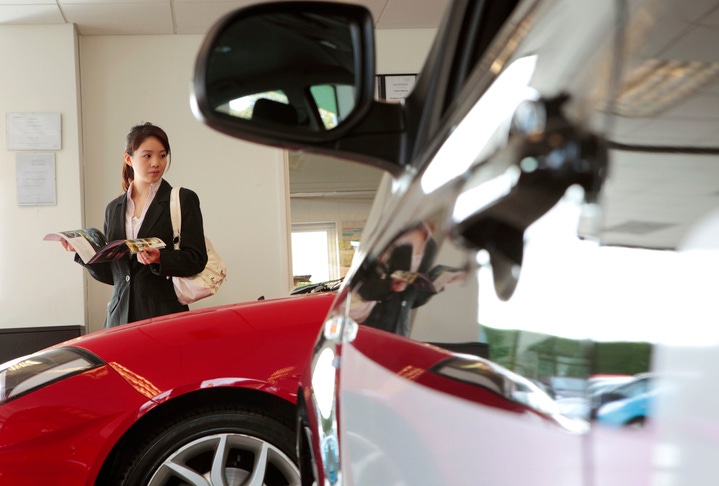Car Dealerships Seem Safe
“It’s not like going to the supermarket,” says J.D. Power’s Tyson Jominy.

U.S. vehicle sales these days are averaging about one per dealership per day, says Tyson Jominy, J.D. Power’s vice president-data and analytics.
That awfully low number raises the issue of whether going to a dealership is hazardous to one’s health during the COVID-19 pandemic, which has triggered stay-at-home orders in many parts of the nation.
With dealership customer traffic so slow, on-site car buying would seem relatively low-risk, provided health precautions such as social distancing and hygienic mask-wearing are followed.
“It’s not like going to the supermarket,” Jominy, during J.D. Power’s weekly report on how the coronavirus crisis is affecting the auto industry, says referring to a consumer situation in which shoppers navigate tight aisles, go through checkout lines and overall share premises with fellow shoppers.
(A qualifier: That one-a-day statistical average includes hinterland mom-and-pop dealerships. Bigger urban stores see more customers in states where it's permissable.)

Jominy Tyson headshot large (002)_0
Twenty-four states allow dealership sales operations to remain open, according to J.D. Power. Twenty-three states allow only online or remote sales. Michigan, which had a full ban on dealership showroom operations, has slightly eased off of that to allow online transactions. (Tyson Jominy, left)Full dealership sales bans essentially are in effect in Hawaii, Kentucky and New York, although the latter now allows some exceptions.
For the week ending April 12, retail sales are down 54% from pre-virus forecasts, similar to the decline for the week ending April 5.
J.D. Power expects April sales of between 412,000 to 558,000 units, down 49% to 62% from previous predictions.
The better-than-bad news is that the decline is stabilizing. That in part “reflects dealer efforts to adapt,” including online sales and revising sales processes to accommodate safety protocols, Jominy says.
Vehicle sales are down everywhere, but some markets are harder hit than others.
Dallas and Phoenix remain resilient, with sales last week down “only” 27% from pre-virus forecasts, Jominy says. In contrast, vehicle deliveries in New York City and Detroit “are near zero,” down 82% and 99%, respectively.
Pickup trucks continue to do relatively well under the circumstances. They represent the strongest segment, compact cars the weakest.
Hefty incentive programs offered by some automakers help keep monthly loan payments affordable, despite many buyers seeing less equity in their trade-ins, says Thomas King, J.D. Power’s president-data and analytics and chief product officer.
“Consumers are able to buy more expensive vehicles and still keep payments affordable,” he says.
Unlike previous auto industry downturns, the one brought on by COVID-19 has not led to lower prices, King says, citing last week’s average transaction price of $35,600.
To date, automaker customer incentives have focused on loan terms, while incentives for cash buyers and lessees have been relatively modest. Improvements in incentives for non-loan customers are expected as the industry works to restore sales to normal levels, J.D. Power predicts.
About the Author
You May Also Like

